Oct 28, 2025 10:47 AM
In Memoriam: Jack DeJohnette, 1942–2025
Jack DeJohnette, a bold and resourceful drummer and NEA Jazz Master who forged a unique vocabulary on the kit over his…
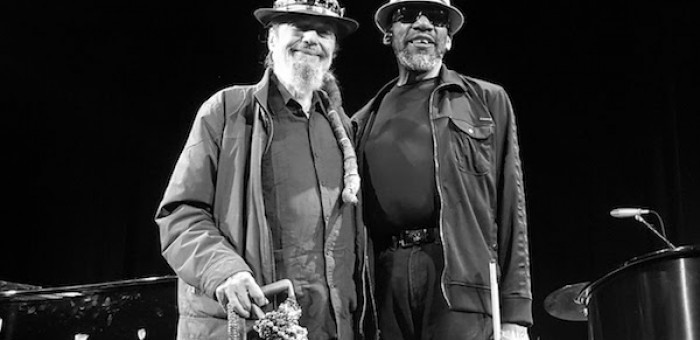
Dr. John (left) and Henry Butler at Town Hall in New York on June 15. The two musicians participated in the first-ever piano summit there.
(Photo: James Demaria)It was like a Mardi Gras party June 15 when two New Orleans piano masters, Dr. John (aka John “Mac” Rebennack) and Henry Butler, paired off for the first time in a special one-night engagement at New York’s Town Hall. And before it was over, New Orleans music devotees in the audience couldn’t help but dance in the aisles to the infectious strains of Professor Longhair’s rhumba boogies “Big Chief,” “Going To The Mardi Gras” and “Tipitina’s.”
Butler opened the evening performing a solo rendition of his “Orleans Inspiration,” showcasing a thunderous left hand, virtuosic right-hand filigrees on the keys and a syncopated spirit that places him firmly in the lineage of New Orleans piano legends like Longhair, James Booker, Tuts Washington and Allen Toussaint.
He injected clever gospel-tinged reharmonization and soul-stirring vocals into the traditional blues tune “Goin’ To Chicago,” which he dubbed “Goin’ To New York” for the occasion. And he dazzled the crowd with his rhythmic and melodic invention and his nonchalant doubling of tempos. It’s easy to see why Butler’s Hot 9 partner, trumpeter-arranger Steven Bernstein, calls the pianist “the Eighth Wonder of the World.”
Dr. John, decked out in a purple suit and funky gris-gris accessories, entered to “Iko Iko,” strutting slowly with his walking stick to his piano, which had an ominous, hoodoo-looking skull sitting on top. With grand pianos abutting each other, the two musicians engaged each other on this oft-recorded Sugar Boy Crawford Mardi Gras classic, fueled by that special Crescent City push-and-pull provided by bassist Roland Guerin and drummer Terry Scott Jr., with Eric Strutters adding skanking rhythm guitar.
The crew segued from “Iko Iko” right into a funkified “Shoo, Fly, Don’t Bother Me,” then Dr. John switched to clavinet to cue his 1973 hit single “Right Place, Wrong Time.” Butler’s display of ivory tickling (or as Mac calls it, “radiate the 88s”) on that Crescent City classic brought a wide grin to the Good Doctor’s face.
On his earthy “How Come My Dog Don’t Bark (When You Come Around),” from his brilliant 1992 album Goin’ Back To New Orleans, Dr. John growled out the innuendo-laden vocals, including this streetwise threat to his wife’s paramour: I’m goin’ straight down to dat barber supply shop/get me a pearl handle, double edge… so when I cut you once/you gonna bleed twice, goin’ an’ comin’.
They revisited Dr. John’s 1974 gem Desitively Bonnaroo for a reading of Earl King’s “Let’s Make A Better World,” and they made like a well-oiled funk machine on an upbeat renditions of Lead Belly’s “Good Night Irene”; Chris Kenner’s “Something You Got,” which Butler sang with gusto; and on the aforementioned trilogy of Longhair classics, which compelled some in the audience to bust out their finest second line moves.
While Dr. John exuded the joyous spirit of Mardi Gras in his colorful, larger-than-life presence throughout this exhilarating set, he conjured up darker spirits on a medley of the hoodoo anthem “I Walk On Guilded Splinters” and the swampy incantation “Gris-Gris Gumbo Ya Ya” (from his 1968 classic, Gris-Gris).
The set concluded with another Dr. John classic, “Such A Night,” in which the N’awlins icon sings about “Sweet confusion under the moonlight,” a sentiment familiar to all Crescent City dwellers. As the backing band continued that catchy refrain, Dr. John strutted offstage arm-in-arm with Butler to a rousing ovation from the packed house.
Has Dr. John, who turns 77 this November, lost a little off his fastball? Considering the hard road he’s traveled since coming out of New Orleans 3rd Ward in 1940, it’s likely. There were moments during this piano summit when laid out on some passages, allowing Butler’s stunning keyboard facility to cover for him—just as Miles Davis deferred to Wallace Roney in his historic 1991 performance at the Montreaux Jazz Festival.
And at times he may have slurred through some lyrics on his own tunes. But does Mac still retain that quintessential spirit of fonk that is at the heart of New Orleans music? Desitively posilutely! DB
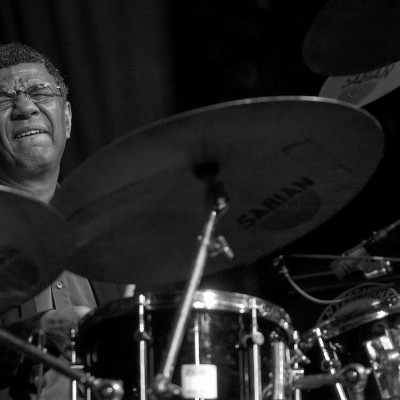
Jack DeJohnette boasted a musical resume that was as long as it was fearsome.
Oct 28, 2025 10:47 AM
Jack DeJohnette, a bold and resourceful drummer and NEA Jazz Master who forged a unique vocabulary on the kit over his…
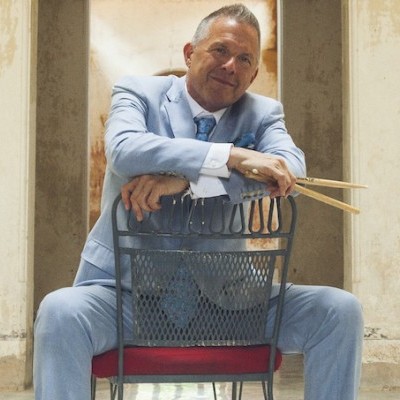
Always a sharp dresser, Farnsworth wears a pocket square given to him by trumpeter Art Farmer. “You need to look good if you want to hang around me,” Farmer told him.
Sep 23, 2025 11:12 AM
When he was 12 years old, the hard-swinging veteran drummer Joe Farnsworth had a fateful encounter with his idol Max…
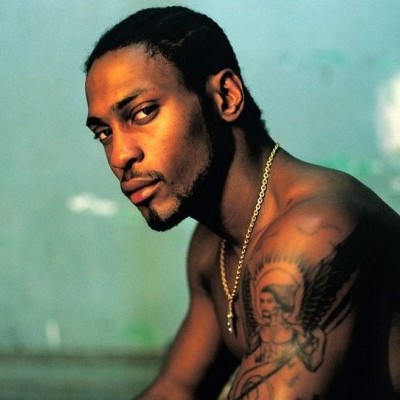
D’Angelo achieved commercial and critical success experimenting with a fusion of jazz, funk, soul, R&B and hip-hop.
Oct 14, 2025 1:47 PM
D’Angelo, a Grammy-winning R&B and neo-soul singer, guitarist and pianist who exerted a profound influence on 21st…
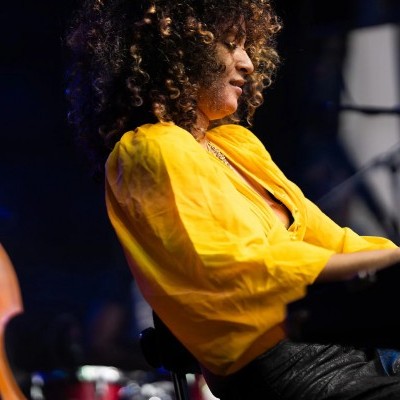
Kandace Springs channeled Shirley Horn’s deliberate phrasing and sublime self-accompaniment during her set at this year’s Pittsburgh International Jazz Festival.
Sep 30, 2025 12:28 PM
Janis Burley, the Pittsburgh International Jazz Festival’s founder and artistic director, did not, as might be…
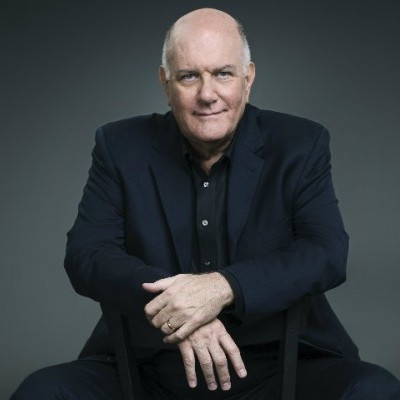
Jim McNeely’s singular body of work had a profound and lasting influence on many of today’s top jazz composers in the U.S. and in Europe.
Oct 7, 2025 3:40 PM
Pianist Jim McNeely, one of the most distinguished large ensemble jazz composers of his generation, died Sept. 26 at…